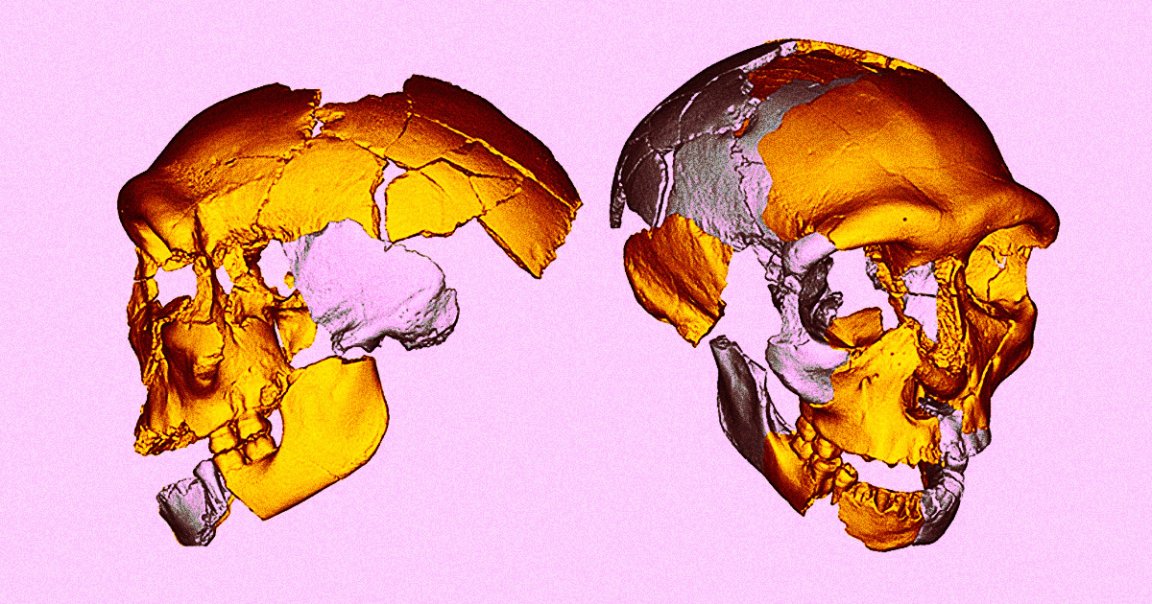
Scientists have found and analyzed an ancient skull which, while decidedly human-like, does not appear to belong to our branch of Homo sapiens — or any other known hominin lineage, for that matter.
The study, published in the Journal of Human Evolution, describes how the skull — found in the Hualongdong region of eastern China back in 2015 and dubbed HLD 6 — proved “unexpected” even to the researchers who closely studied it.
An estimated 300,000 years old, HLD 6 appears to be a strange and never-before-seen mix of H. sapiens and the Denisovan lineage, another hominin that is believed to have branched off from Homo erectus.
María Martinón-Torres, the director of Spain’s National Research Center on Human Evolution and author of a study on the fascinating finding, told CNN that the most striking feature that sets HLD 6 apart is that it doesn’t have a chin like ours — a trait it shares with the Denisovan lineage, named for the Greek cave in which it was found.
“HLD6 does not present a true chin,” the Spanish paleontologist said, “but has some weakly expressed traits that seem to anticipate this typically H. sapiens feature.”
That curious mixture of lineage traits — and its age being between 100,000 and 170,o00 years older than the oldest-known Denisovan — does indeed make for an interesting find. As the group of Spanish, Chinese and British researchers note in their study, it appears that HLD 6 is a type of hominin that has not yet been classified and could represent one of the first examples of early human evolution during the late Middle Pleistocene era.
While the Pleistocene epoch is chronologically massive, dating between 1.8 million to 11,700 years ago, the middle of that era is believed by many experts to be a pivotal time period for human evolution.
Finding a relatively modern-seeming hominin skull from the Middle Pleistocene that still contained characteristics similar to newer lineages, therefore, is a pretty big find. As Martinón-Torres told CNN, it makes HLD 6 and the other bones found near it “one of the earliest fossil population[s] known in Asia to present this mosaic of primitive and H. sapiens-like features.”
Martinón-Torres said that while scientists will need “more fossils and studies” to figure out where HLD 6 lands “in the human family tree,” this stunning finding could reshape the way the scientific community thinks of the era that shaped modern human history — a worthy pursuit even as our species continues its march towards annihilation.
More on weird human ancestors: Scientists Make Horrific Discovery About Cannibalism in Human Ancestors